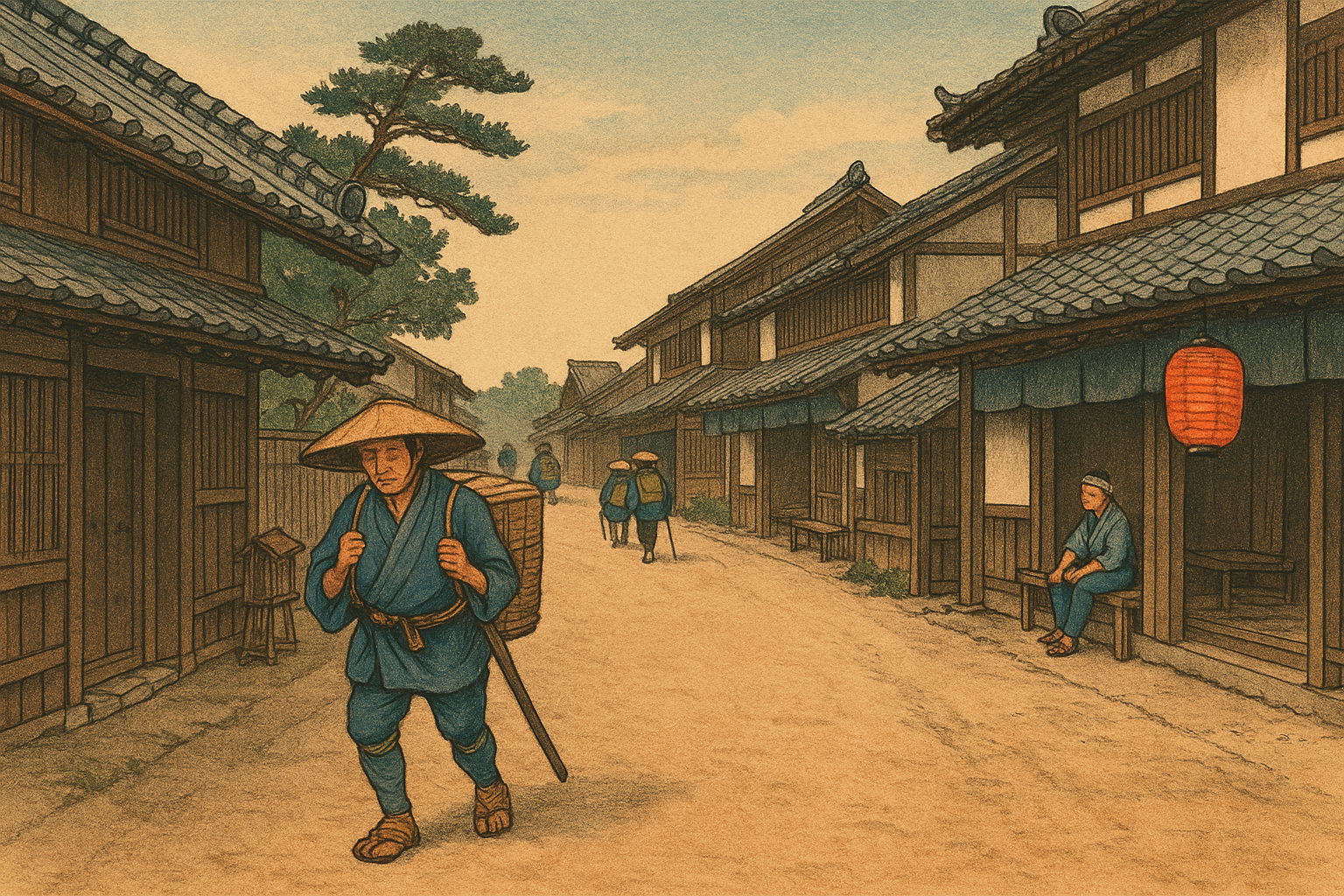~A Hidden Historical Spot Near Kyoto and Nara~
Most travelers visiting Kyoto or Nara head straight for the famous temples and shrines, but Kansai also has quieter places where you can soak up Japan’s history without the crowds.
One of these hidden gems is Kusatsu-juku in Kusatsu City, Shiga Prefecture.
It’s an ideal side trip to add to your Kyoto or Nara itinerary, offering a unique glimpse into Japan’s traditional travel culture.
What is Kusatsu-juku?
- A crossroads of Japan’s highways: The point where the Tokaido (from Edo/Tokyo to Kyoto) and the Nakasendo (through central Japan) split and joined.
- Kusatsu Honjin: A grand inn where feudal lords and nobles stayed, one of the few that still survives today.
- Historic townscape: Old wooden houses and stone markers remain along the road, letting you experience history as you stroll.
When many people hear “Kusatsu,” they think of the hot spring town in Gunma Prefecture. But Kusatsu in Shiga has a completely different story—it is known as a post town, not a hot spring.
During the Edo period, Kusatsu thrived as a hub where countless travelers, merchants, and even samurai passed through. Today, you can still feel the atmosphere of that time, just 20 minutes by train from Kyoto.
Highlights
Kusatsu Honjin
A nationally designated historic site that served as an inn for high-ranking guests.
- Walk through the rooms where feudal lords once stayed.
- See fascinating artifacts like wooden tablets, old guest ledgers, and ukiyo-e prints.
- Names recorded in the ledgers include famous figures such as Kira Kozuke-no-suke and Asano Naganori (from the 47 Ronin story), Imperial Princess Kazunomiya, the scholar Siebold, and Hijikata Toshizo of the Shinsengumi.
- With 39 rooms covering 1,706 square meters, it’s one of the largest honjin buildings in Japan.
Townscape of the Old Highway
Because the area is not overly commercialized, you can enjoy a peaceful walk and feel the Edo-period atmosphere. Perfect for travelers who prefer quiet streets and authentic photo opportunities.
Tachiki Shrine
A historic shrine where travelers once prayed for safety on the road.
- A striking large torii gate surrounded by greenery.
- Still popular today for wishes of traffic safety and protection from misfortune.
How to Explore Kusatsu-juku
The area is compact, so about two hours is enough to enjoy a walk.
Suggested route:
- From JR Kusatsu Station, walk 15 minutes to the old post town.
- Explore Kusatsu Honjin.
- Stroll along the highway townscape toward Tachiki Shrine.
- If you have extra time, relax at Kusatsu-gawa Riverside Park.
It’s a simple, stress-free walk that gives you a taste of real Japanese history.
Why You Should Visit
- Only 20 minutes from Kyoto
→ Easy for a day trip or a quick stop. - Quiet and uncrowded
→ Unlike Kyoto and Nara’s famous sites, you can explore at your own pace. - A real slice of Japanese history
→ One of the few places to walk through an actual Edo-era post town. - Plenty of photo spots
→ Traditional wooden houses, shrines, stone markers, and seasonal flowers.
Unlike Kyoto’s glamorous temples or Nara’s iconic deer, Kusatsu-juku lets you experience the history of ordinary travelers and merchants—a side of Japan that’s just as important.
Access
- From Kyoto Station: 20 minutes by JR Special Rapid train.
- From Otsu Station: 10 minutes by JR.
- From central Kyoto or Nara, you can also take the subway via Otsu to avoid busy crowds at Kyoto Station.
- 15-minute walk from JR Kusatsu Station to the historic area.
Because it’s easily reachable by public transportation, Kusatsu is a convenient add-on to your Japan travel plans.
Conclusion
Kusatsu-juku is a chance to experience a real Edo-period post town while staying close to Kyoto.
- Feel the spirit of Edo-era travelers.
- Enjoy a quiet walk away from the crowds.
- Learn about Japan’s traditional highway culture and bring home memorable photos.
If you’ve already visited Kyoto and Nara’s famous sights—or if you simply want to find hidden gems in Japan travel—Kusatsu-juku is the perfect stop.
On your next trip to Kansai, take a detour and step into the history of Japan’s highways.
